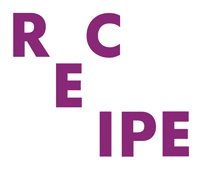
Want to start using Marketing Automation but draw a blank in terms of how it should support the marketing team's activities? Or do you feel overwhelmed by all the opportunities for automation you can
Using these 10-steps, lay the foundations for successful Marketing Automation.
- Get company-wide buy-in to Marketing Automation. Keeping Marketing Automation close to your chest, or just within the marketing team, can lead to mistrust and fear. The decision to adopt Marketing Automation should be presented by management, with an explanation as to what Marketing Automation is, and how it can be used to deliver outcomes for the business across multiple business units. Marketing Automation should be presented, from the outset, as a technique to support sales, customer service and marketing.
- Develop lead capture mechanisms. Have content that's useful to prospects available for download on the business' website? Implement a form and an automation that sees the content delivered directly to the prospect's inbox and you've developed another lead capture mechanism. Lead generated, you can now nurture the lead.

- Find quick wins, with clearly defined outcomes in mind. Identify low-risk, high-value wins to support marketing activities.
- Review contact form submissions: can you identify any trends? Develop content that responds to key themes, implement a drop-down on the website which references these themes, and
develop a Marketing Automation email that responds to each of these respective themes. An effective campaign should result in the ability of prospects to self-service, reducing dependency on customer service, sales and marketing teams. - Is there an email automation in place that confirms the receipt of a contact form and advises expected turnaround? This automation should reduce enquiries across multiple channels and lead to an increase in customer satisfaction with expectations managed.
- Follow up a form submission with an email from a salesperson that shares content on a relevant, helpful topic.
- Review contact form submissions: can you identify any trends? Develop content that responds to key themes, implement a drop-down on the website which references these themes, and
- Evaluate. Was your hypothesis accurate? Did you achieve your objective? What could be changed to improve the outcome? Implement an A/B test to enable iteration.
- Report on, and share. Share your success across departments: explain the campaign, be specific and use data to support the outcome.
Once you've delivered your first Marketing Automation campaign, and built trust in Marketing Automation as a technique, you can begin to look to further adoption. - Evaluate your database and create segments based on profile information. Segmentation often starts with geographic and demographic considerations, but the gold-standard of segmentation reflects behavioural and attitudinal segments.
- Identify the area of your sales funnel that needs the most improvement. Lead generation a challenge? Or do you need to drive consideration?
- With your particular marketing challenge in mind, bring your team together to make a list of routine marketing activities your company engages in at that stage of the marketing funnel.
- Bring together, or create the content, calculators, tools and assets that support engagement at this stage of the sales funnel (educational content at the beginning of the process vs. solution-oriented content for later stages).
- Develop simple, automated workflows that address this section of your sales funnel. Evaluate, report,
share, and iterate.
Ready to take things further?
- Develop new ways to segment your lists by combining demographic information with behavioural data.
- Create marketing assets targeted to specific buyer profiles or personas.
- Develop content for each stage of the sales funnel.
- Start to explore more complex automated workflows (e.g. incorporating CRM activities and updates as workflow triggers).
- Coordinate the marketing and sales teams to create campaigns targeted at the “hottest” sales leads based on demographic and behavioural data.
